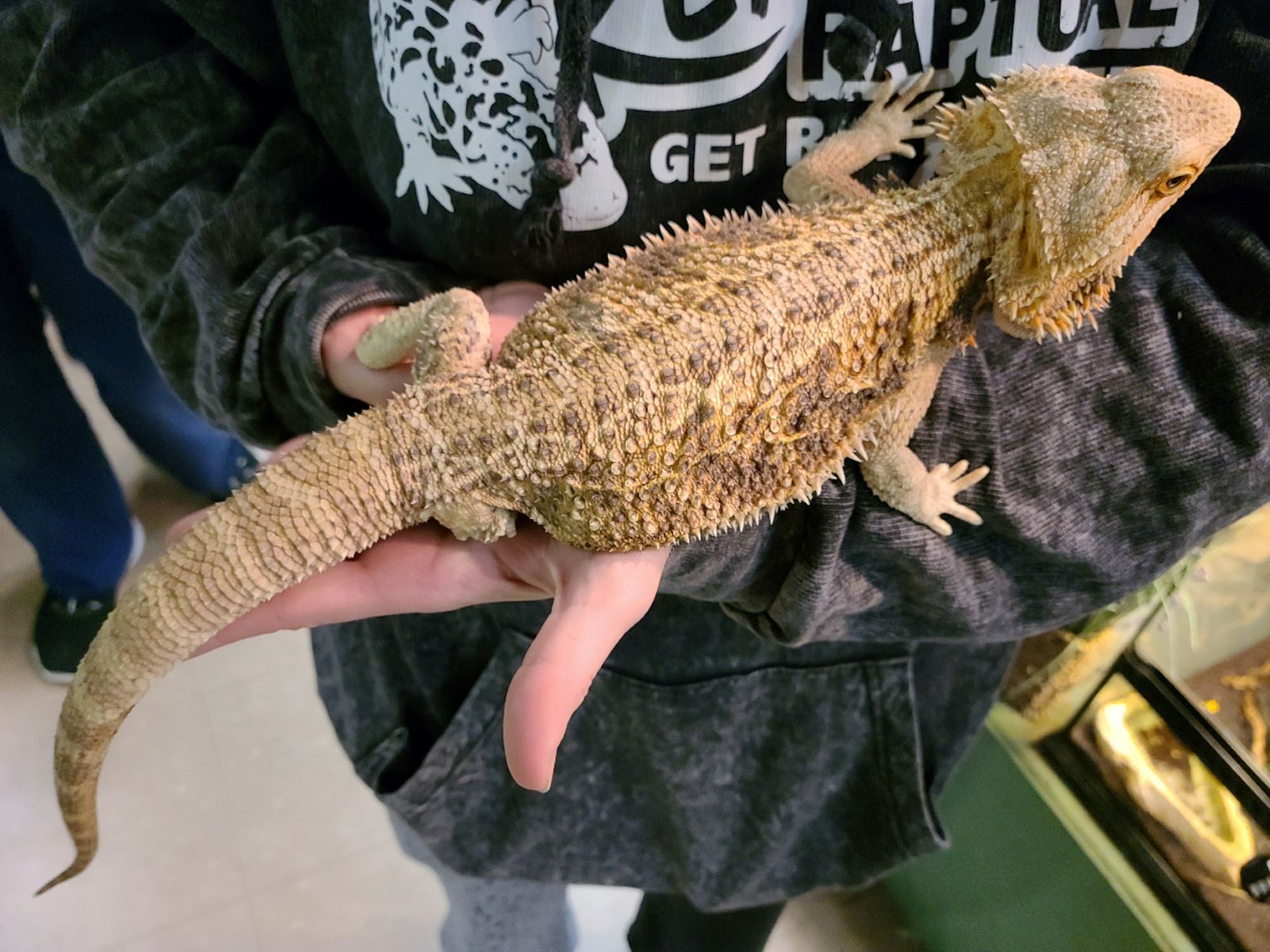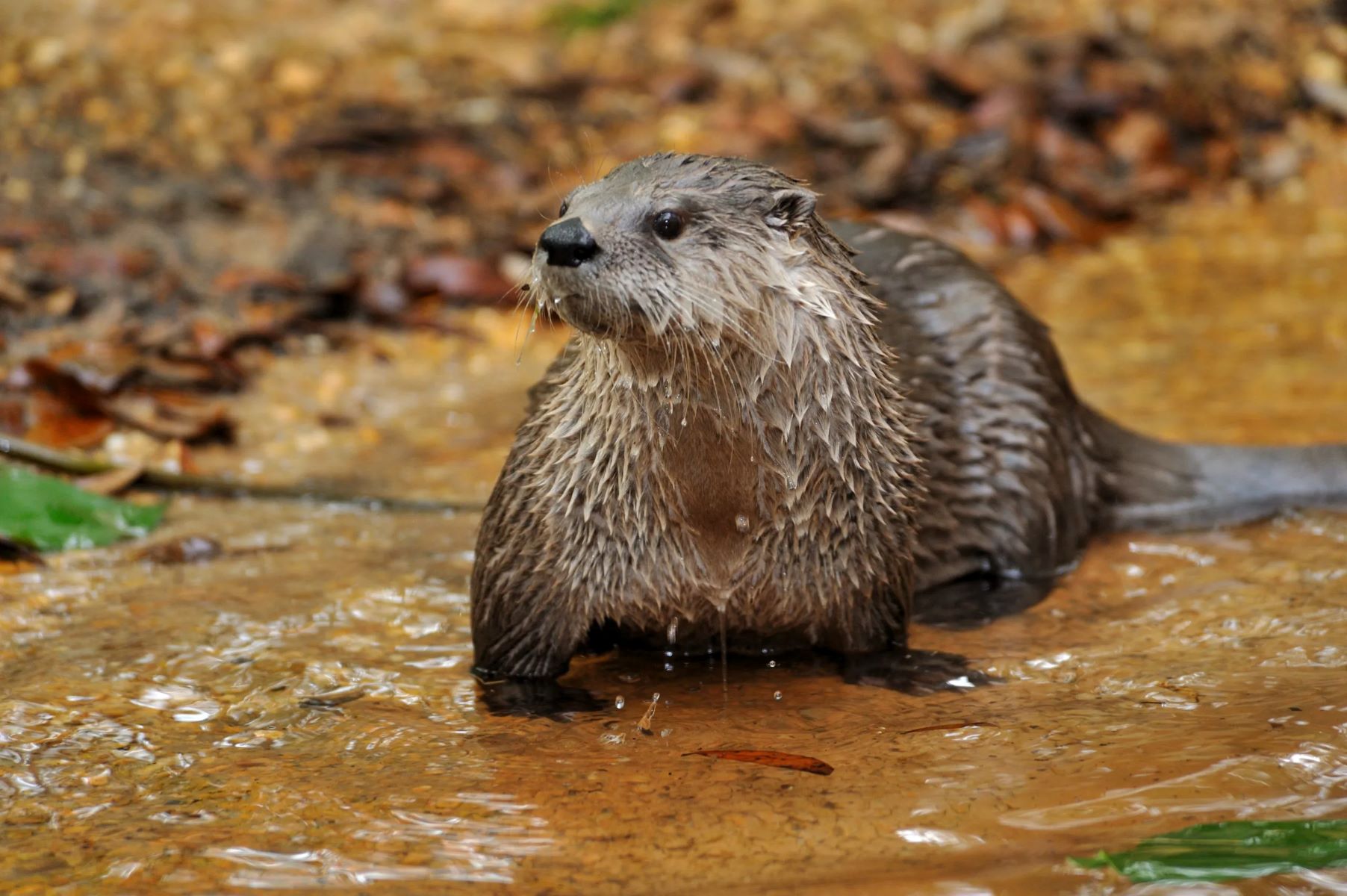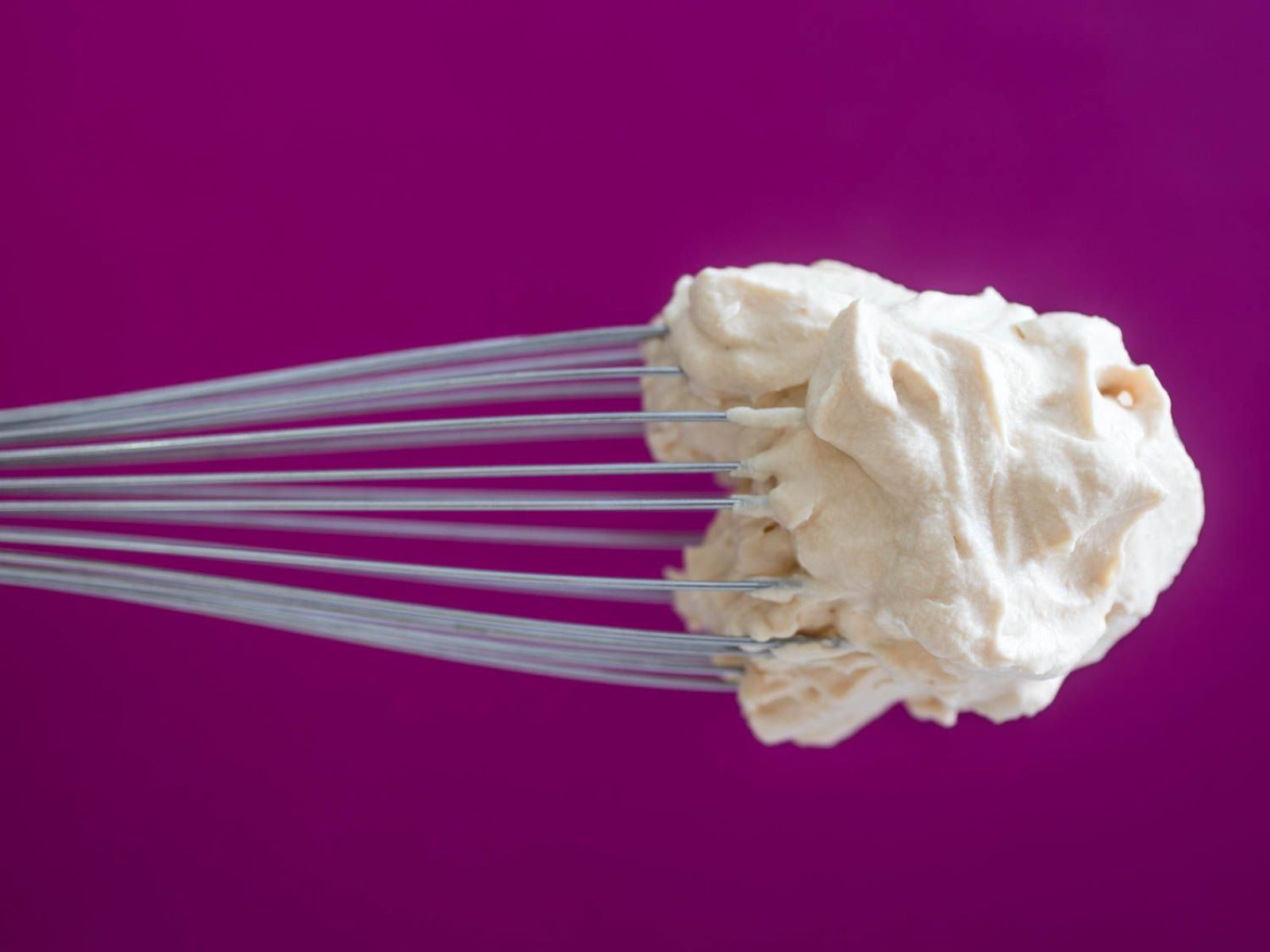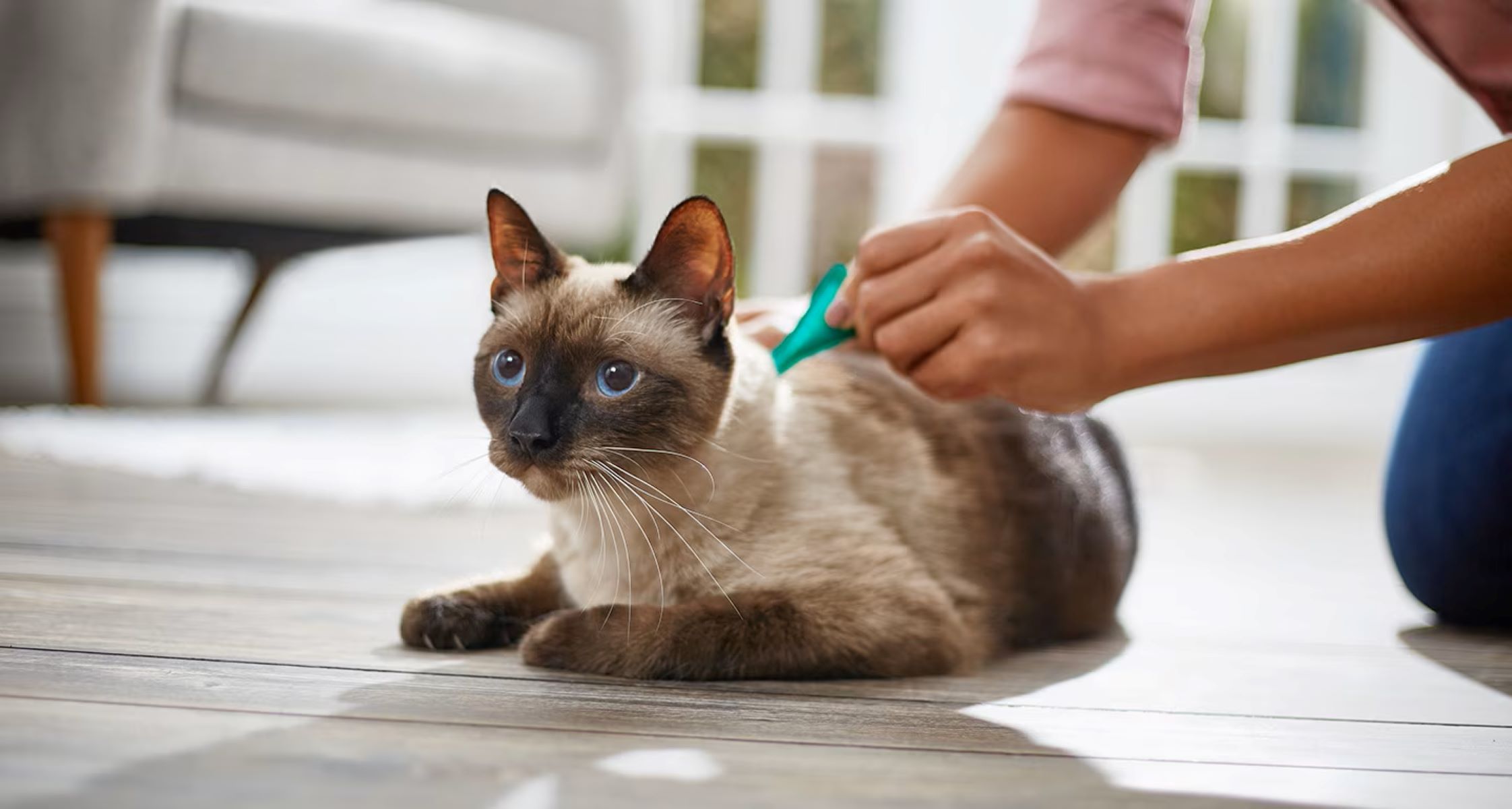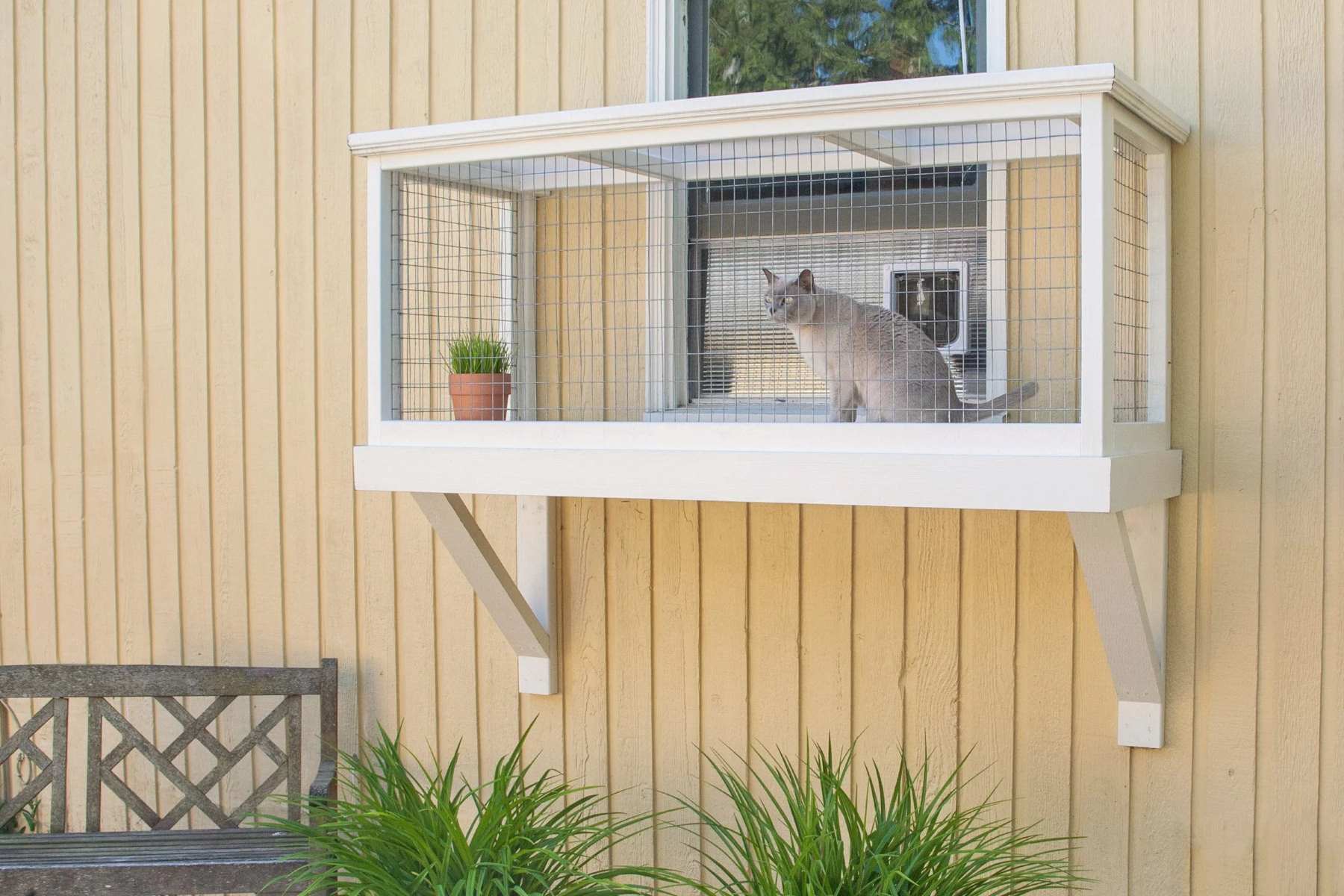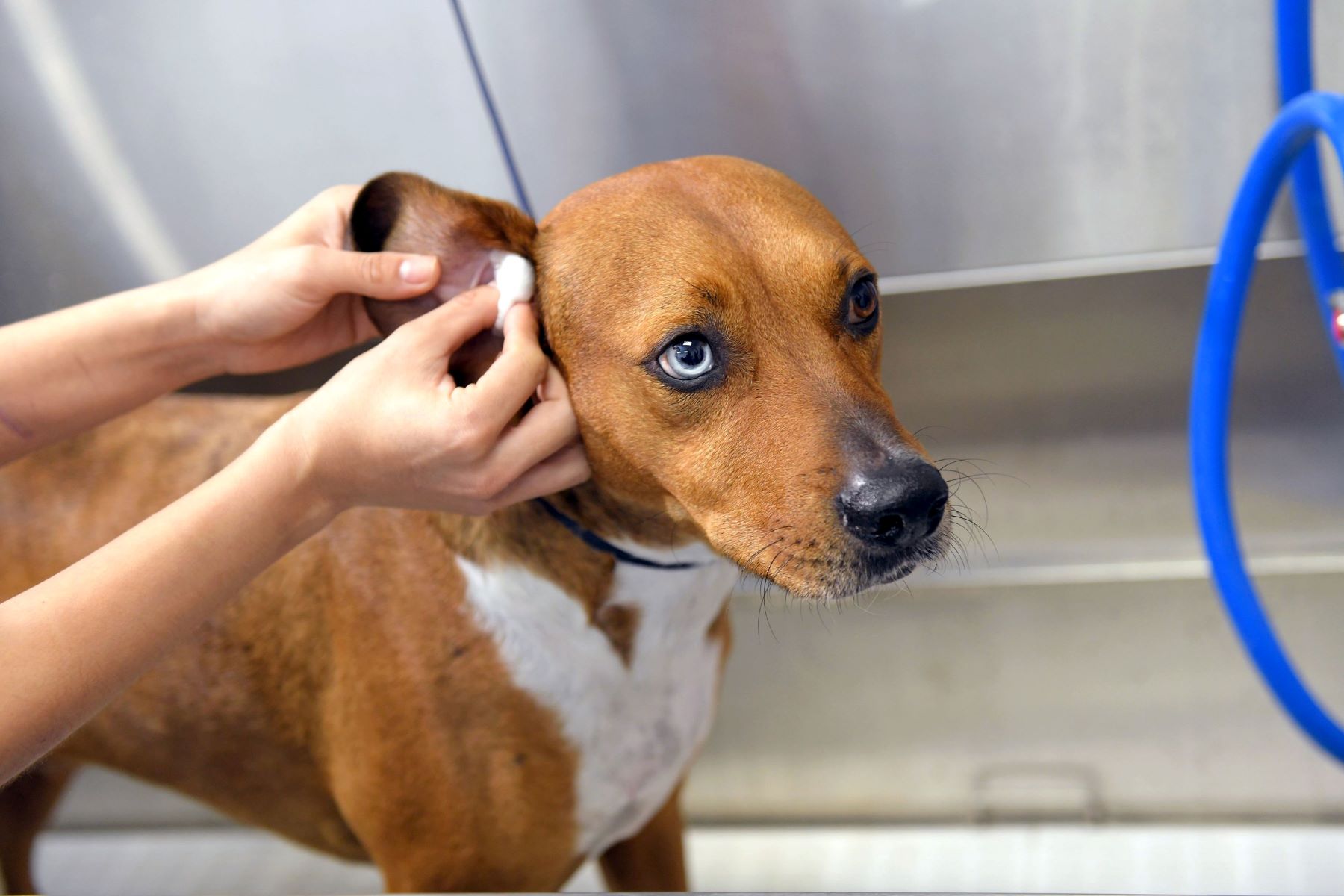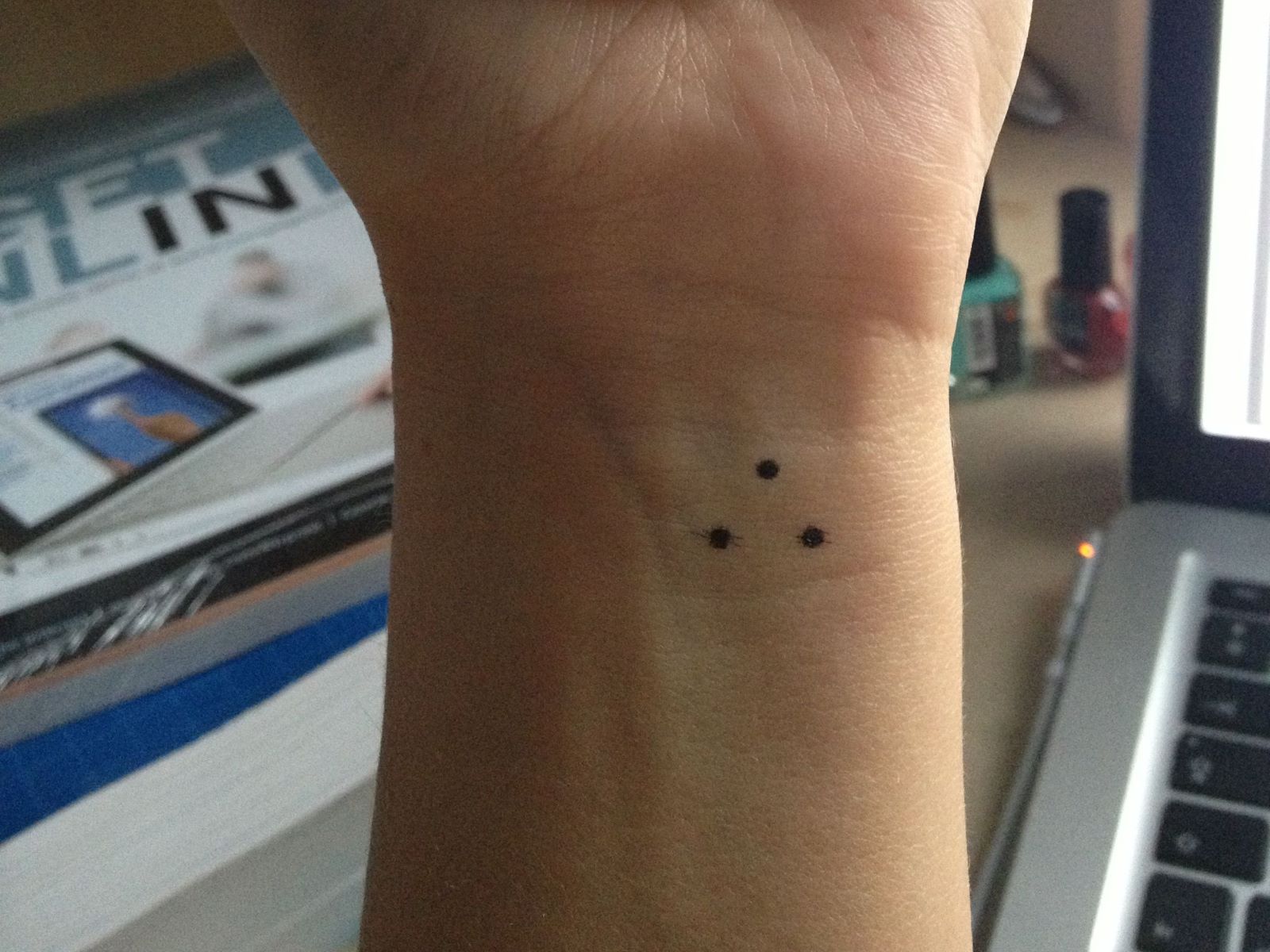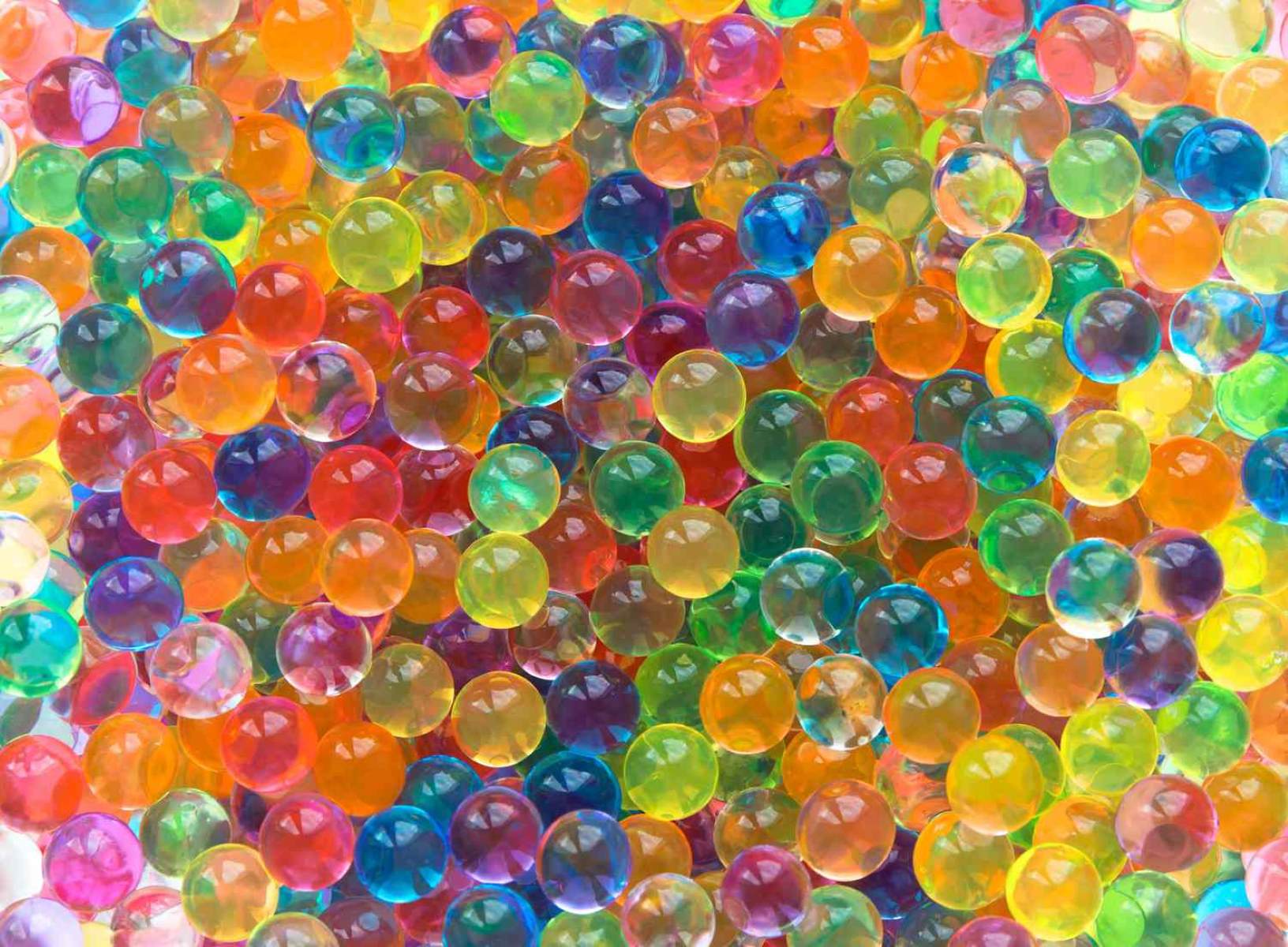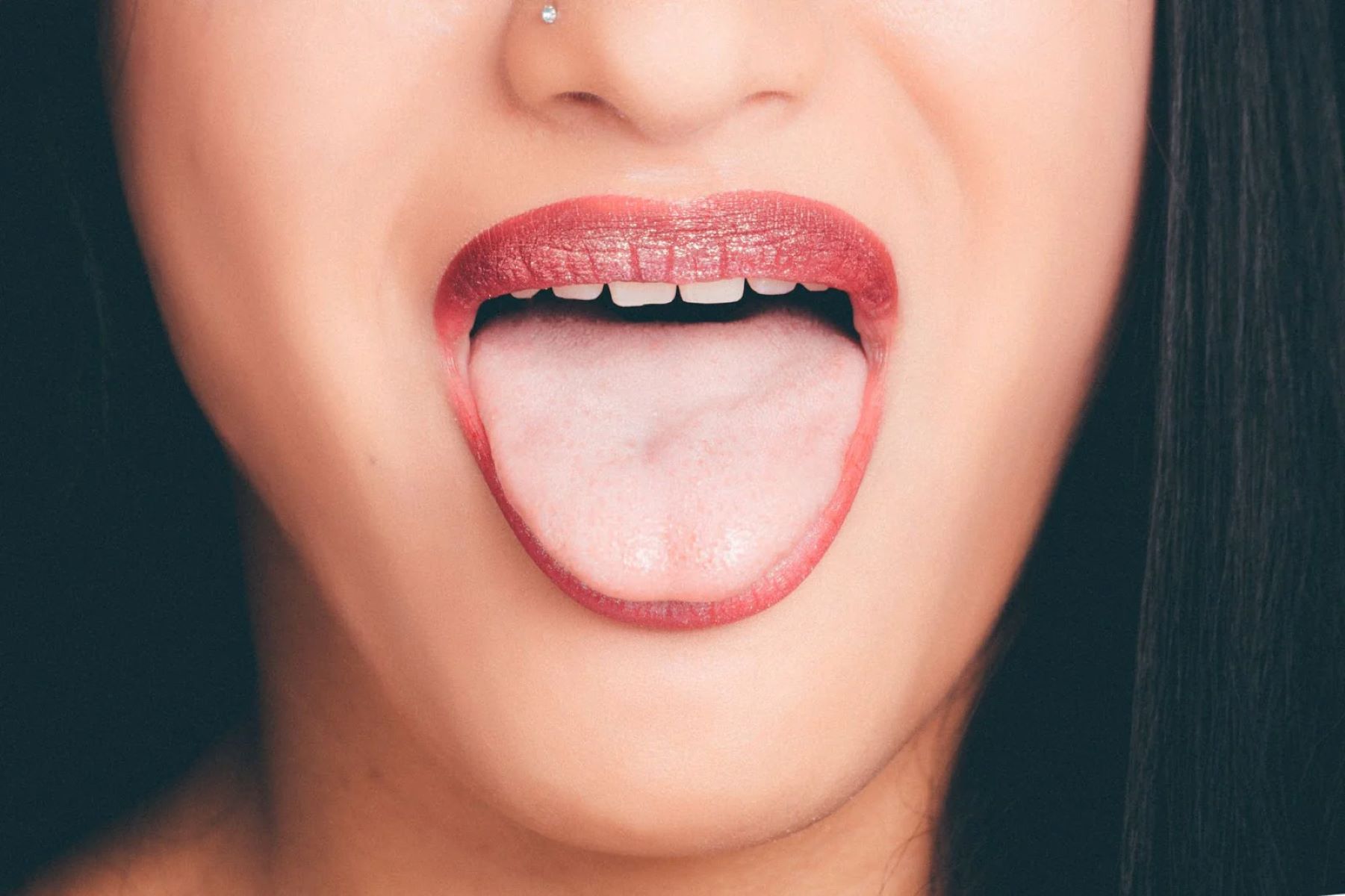Home>Lifestyle>The Ultimate Guide To Caring For Polka Dot Begonias
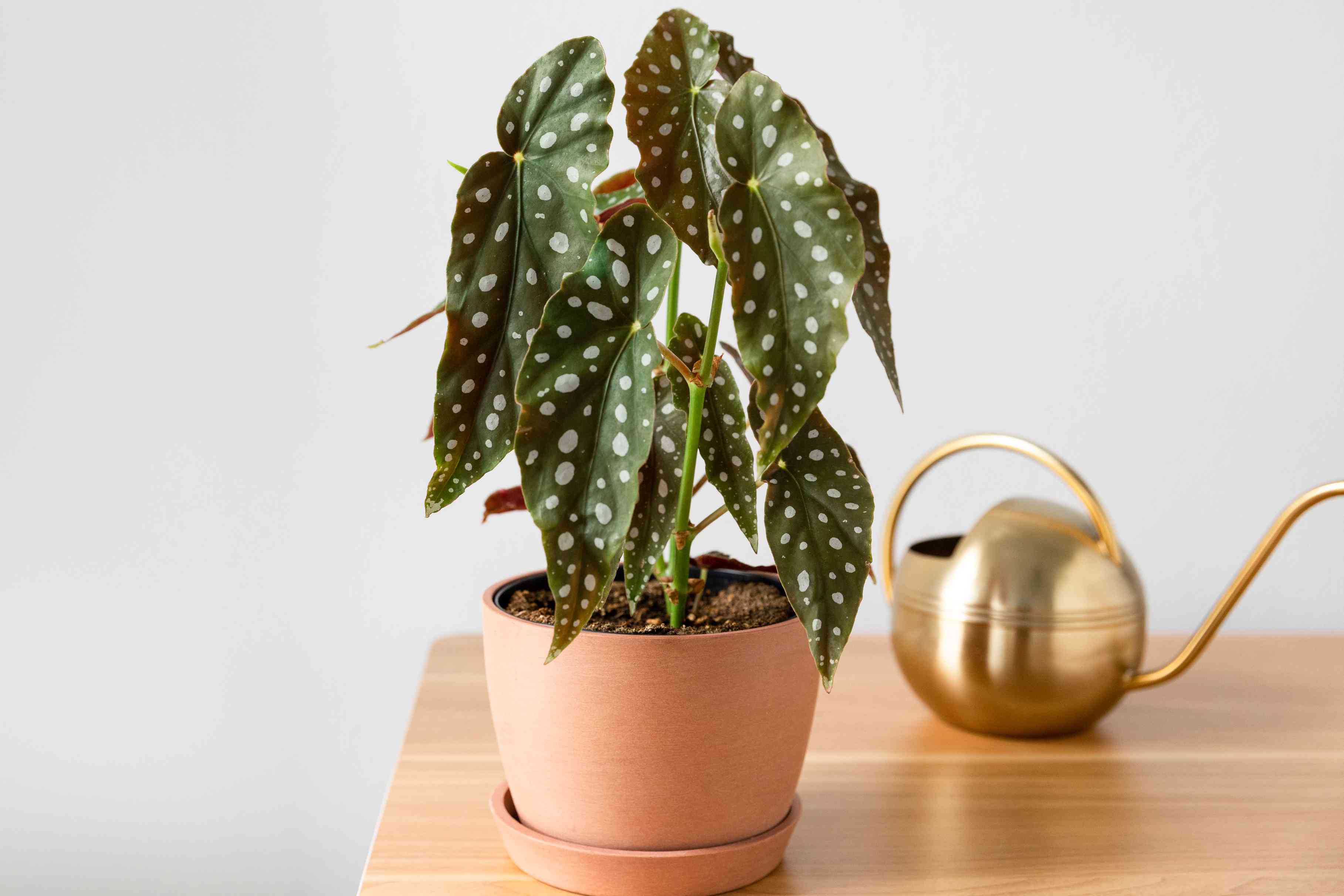

Lifestyle
The Ultimate Guide To Caring For Polka Dot Begonias
Modified: April 7, 2024
Discover the essential tips for caring for polka dot begonias and incorporating them into your lifestyle with our comprehensive guide. Explore the best practices for nurturing these unique plants.
(Many of the links in this article redirect to a specific reviewed product. Your purchase of these products through affiliate links helps to generate commission for Regretless.com, at no extra cost. Learn more)
Table of Contents
Introduction
Polka Dot Begonias, also known as Begonia maculata, are stunning and unique houseplants that have gained popularity among plant enthusiasts. With their distinctively patterned leaves featuring silver spots on dark green, they add a touch of elegance and charm to any indoor space. Caring for Polka Dot Begonias can be a rewarding experience, but it requires a good understanding of their specific needs and preferences.
In this comprehensive guide, we will delve into the various aspects of caring for Polka Dot Begonias, providing you with valuable insights and practical tips to ensure the optimal growth and well-being of these beautiful plants. From understanding their unique characteristics to addressing their light and temperature requirements, watering and humidity needs, soil and fertilization considerations, pruning and propagation techniques, as well as common pests and diseases to watch out for, this guide covers all the essential information you need to become a successful Polka Dot Begonia caretaker.
Whether you're a novice plant enthusiast looking to add a touch of exotic beauty to your indoor garden or an experienced gardener seeking to expand your repertoire of houseplants, this guide will equip you with the knowledge and skills to nurture thriving Polka Dot Begonias. So, let's embark on this exciting journey of discovering the enchanting world of Polka Dot Begonias and learn how to provide them with the care and attention they deserve.
Understanding Polka Dot Begonias
Polka Dot Begonias, scientifically known as Begonia maculata, are captivating and visually striking houseplants that belong to the Begoniaceae family. These plants are native to the tropical regions of Brazil, where they thrive in the warm and humid climates of the rainforest. The most distinctive feature of Polka Dot Begonias is their eye-catching foliage, which showcases asymmetrical, silver-white spots on dark green, angel-wing-shaped leaves. This unique pattern gives the plant a mesmerizing and ornamental appeal, making it a coveted addition to any indoor garden.
In addition to their remarkable foliage, Polka Dot Begonias produce delicate, pendulous clusters of white flowers, adding a touch of elegance to their overall appearance. These flowers, while not the main attraction of the plant, contribute to its overall charm and beauty.
Polka Dot Begonias are classified as cane-like begonias, characterized by their upright, bamboo-like stems that give them an elegant and statuesque presence. When provided with the right care and conditions, these plants can grow to impressive heights, making them a striking focal point in any indoor setting.
One of the key factors that make Polka Dot Begonias popular among plant enthusiasts is their relatively low maintenance requirements. While they do have specific care needs, these plants are generally resilient and adaptable, making them suitable for both novice and experienced gardeners. However, understanding their unique characteristics and preferences is crucial to ensure their optimal growth and well-being.
In the wild, Polka Dot Begonias thrive in the dappled sunlight and high humidity of the rainforest understory. Replicating these conditions in a home environment is essential for the plant's overall health. Understanding the natural habitat of Polka Dot Begonias provides valuable insight into their light and temperature requirements, watering and humidity needs, soil and fertilization preferences, as well as pruning and propagation techniques. This knowledge forms the foundation for providing the best possible care for these stunning houseplants.
As we continue to explore the various aspects of caring for Polka Dot Begonias, let's delve deeper into their light and temperature requirements to understand how to create an ideal environment for these captivating plants.
Light and Temperature Requirements
Polka Dot Begonias thrive in bright, indirect light, making them well-suited for indoor environments with ample natural light. When it comes to light requirements, these plants prefer to be positioned near a window where they can benefit from filtered sunlight. Direct exposure to intense sunlight should be avoided, as it can lead to leaf scorching and damage. In their natural habitat, Polka Dot Begonias grow beneath the canopy of trees, receiving gentle, diffused light, which should be replicated as closely as possible indoors.
Maintaining a consistent temperature is crucial for the well-being of Polka Dot Begonias. These plants thrive in warm and humid conditions, ideally with temperatures ranging from 65°F to 75°F (18°C to 24°C). It's important to protect them from sudden temperature fluctuations and drafts, as these can cause stress and negatively impact their growth. During the winter months, it's essential to shield them from cold drafts and ensure that the surrounding temperature remains within their preferred range.
To provide the optimal light and temperature conditions for Polka Dot Begonias, consider placing them in a room with bright, indirect sunlight and a stable, moderate temperature. Rooms with east or west-facing windows are ideal, as they receive gentle morning or afternoon sunlight, creating a favorable environment for these plants to thrive. Additionally, maintaining consistent humidity levels through methods such as misting or using a humidifier can further enhance the overall well-being of Polka Dot Begonias, mimicking the tropical conditions they naturally thrive in.
By understanding and fulfilling the light and temperature requirements of Polka Dot Begonias, you can create a nurturing environment that allows these captivating plants to flourish and display their stunning foliage to the fullest. Providing them with the right balance of light and warmth sets the stage for their overall health and vitality, laying the foundation for a rewarding and visually captivating indoor garden.
As we continue our exploration of caring for Polka Dot Begonias, the next section will focus on their watering and humidity needs, shedding light on the essential practices for maintaining optimal moisture levels and creating a thriving environment for these unique houseplants.
Watering and Humidity
Proper watering and humidity management are crucial aspects of caring for Polka Dot Begonias. These plants have specific moisture needs that directly impact their health and overall growth. Understanding the ideal watering practices and humidity levels is essential for creating a conducive environment for these stunning houseplants to thrive.
When it comes to watering Polka Dot Begonias, it's important to strike a balance between providing adequate moisture and avoiding waterlogged soil. These plants prefer consistently moist soil, but they are susceptible to root rot if they are overwatered. As a general rule, it's best to allow the top inch of the soil to dry out slightly between waterings. This helps prevent water accumulation at the root level while ensuring that the plant's root system receives the necessary hydration.
To water Polka Dot Begonias effectively, it's advisable to water them from the base, allowing the soil to absorb the moisture gradually. This method helps prevent water from collecting on the leaves, which can lead to issues such as fungal diseases and leaf spotting. Additionally, using room-temperature water is recommended to avoid shocking the plant with cold water, especially during the winter months.
In terms of humidity, Polka Dot Begonias thrive in high humidity environments, mirroring the conditions of their native tropical habitat. Indoor spaces often have lower humidity levels, particularly during the winter when heating systems can further dry out the air. To address this, employing methods to increase humidity around the plant, such as regular misting, using a humidifier, or placing the plant on a humidity tray, can significantly benefit its overall well-being.
Misting the foliage of Polka Dot Begonias with a fine spray of water helps create a microclimate around the plant, increasing the moisture in the air and providing the humidity levels these plants favor. When using a humidifier, positioning it near the plant or within the same room helps maintain the desired humidity levels, promoting healthy growth and preventing issues related to dry air.
By mastering the art of watering and managing humidity levels, you can provide the optimal conditions for Polka Dot Begonias to thrive. These practices contribute to the plant's overall health and vitality, ensuring that it continues to display its stunning foliage and remains a captivating addition to your indoor garden.
As we continue our exploration of caring for Polka Dot Begonias, the next section will focus on soil and fertilization, shedding light on the essential practices for providing the right growing medium and nutrients to support the plant's robust growth.
Soil and Fertilization
The choice of soil and proper fertilization play a pivotal role in nurturing healthy and thriving Polka Dot Begonias. The ideal soil for these plants should offer a well-balanced combination of moisture retention, aeration, and nutrient availability. A high-quality, well-draining potting mix with a rich organic content serves as an excellent foundation for supporting the growth and development of Polka Dot Begonias.
When selecting a potting mix for Polka Dot Begonias, it's essential to opt for formulations specifically designed for tropical or foliage plants. These mixes typically contain ingredients such as peat moss, perlite, and pine bark, which provide the necessary structure and moisture retention while ensuring adequate aeration for the plant's root system. Additionally, incorporating a small amount of sand into the potting mix can further enhance drainage, preventing waterlogged conditions that can lead to root rot.
Fertilization is another critical aspect of caring for Polka Dot Begonias. While these plants do not have excessively high nutrient requirements, providing them with a balanced, water-soluble fertilizer formulated for foliage plants can support their overall health and vigor. During the active growing season, which typically spans from spring to early fall, a half-strength, balanced liquid fertilizer can be applied every two to four weeks to provide the necessary nutrients for robust growth and vibrant foliage.
It's important to avoid over-fertilizing Polka Dot Begonias, as excessive nutrients can lead to salt buildup in the soil, causing root damage and negatively impacting the plant's well-being. As a general guideline, it's advisable to reduce or suspend fertilization during the plant's dormant period in the winter, allowing it to undergo a period of rest without the additional stimulation of growth-promoting nutrients.
In summary, selecting the right potting mix and implementing a balanced fertilization regimen are essential components of caring for Polka Dot Begonias. By providing them with a well-draining, nutrient-rich soil medium and judiciously applying a suitable fertilizer, you can create an environment that supports the plant's growth, enhances its foliage, and contributes to its overall vitality and beauty.
Continuing our exploration of caring for Polka Dot Begonias, the next section will focus on pruning and propagation, offering valuable insights into maintaining the plant's shape and expanding your collection through propagation techniques.
Read more: The Ultimate Guide To Caring For Your Angel Wing Begonia Plant – Unleash Its Full Potential!
Pruning and Propagation
Pruning and propagation are essential practices for maintaining the health and vitality of Polka Dot Begonias, allowing you to shape the plant's growth and expand your collection. Proper pruning helps manage the plant's size, encourages bushier growth, and removes any damaged or diseased foliage, promoting overall vigor and aesthetics.
When pruning Polka Dot Begonias, it's important to use clean, sharp scissors or pruning shears to make precise cuts. Begin by removing any yellowing or discolored leaves, as well as any stems that appear leggy or overgrown. Trimming back long, straggly stems encourages the plant to produce new growth, resulting in a more compact and lush appearance.
Additionally, regular pruning can help maintain the plant's desired shape and prevent it from becoming unruly. By selectively removing stems and foliage, you can guide the plant's growth and create a visually appealing silhouette. It's important to prune with care, avoiding excessive removal of healthy foliage to ensure that the plant retains its ability to photosynthesize and thrive.
Propagation offers an exciting opportunity to expand your collection of Polka Dot Begonias and share these captivating plants with fellow enthusiasts. One of the most common methods of propagation for Begonia maculata is through stem cuttings. To propagate your Polka Dot Begonia, select a healthy, non-flowering stem and carefully cut it just below a node, ensuring that the cutting is approximately 4 to 6 inches long.
After taking the cutting, remove the lower leaves to expose a node, which is where the roots will develop. Dip the cut end of the stem in a rooting hormone to encourage the formation of roots, then plant it in a well-draining potting mix. Keep the soil consistently moist and provide the cutting with bright, indirect light to support root development.
Another method of propagation for Polka Dot Begonias is through leaf cuttings. Select a healthy, mature leaf and cut it into sections, ensuring that each section has a prominent vein running through it. Plant the leaf sections in a moist, well-draining potting mix and maintain high humidity to promote the emergence of new plantlets from the leaf veins.
By mastering the art of pruning and propagation, you can actively shape the growth of your Polka Dot Begonias and expand your collection through the joy of propagating new plants. These practices not only contribute to the overall health and aesthetics of the plants but also offer a rewarding and engaging aspect of caring for these captivating houseplants.
Common Pests and Diseases
Caring for Polka Dot Begonias also involves being vigilant against potential pests and diseases that can affect the plant's health. While these houseplants are generally resilient, being aware of common issues and implementing preventive measures can help maintain their vitality.
Pests
Polka Dot Begonias are susceptible to common houseplant pests such as spider mites, mealybugs, and aphids. Spider mites, tiny arachnids that thrive in dry conditions, can infest the undersides of the plant's leaves, causing stippling and webbing. Mealybugs, characterized by their cottony appearance, often cluster on the stems and leaf nodes, sucking sap from the plant. Aphids, small insects that come in various colors, can congregate on new growth, causing distortion and yellowing of the leaves.
To combat these pests, regular inspection of the plant is essential. If signs of infestation are detected, a targeted approach using insecticidal soap or neem oil can effectively control the population. Isolating the affected plant and maintaining proper airflow can also prevent the spread of pests to other nearby plants.
Diseases
Polka Dot Begonias are susceptible to fungal diseases, particularly when exposed to excessive moisture or poor air circulation. Leaf spot diseases, characterized by dark lesions on the foliage, can occur when the leaves remain wet for extended periods. Additionally, root rot can develop in waterlogged soil, leading to wilting and decline in the plant's overall health.
Preventing fungal diseases involves ensuring proper watering practices, allowing the soil to dry out slightly between waterings to prevent excess moisture accumulation. Providing adequate air circulation around the plant and avoiding overhead watering can also mitigate the risk of fungal issues. In cases of suspected fungal diseases, removing affected foliage and improving growing conditions can help the plant recover.
By staying vigilant and addressing potential pest and disease issues promptly, you can safeguard the health and beauty of your Polka Dot Begonias. Regular monitoring, coupled with proactive measures to create an environment that discourages pests and diseases, is key to ensuring the long-term well-being of these captivating houseplants.
Repotting
Repotting is an essential aspect of caring for Polka Dot Begonias, ensuring that the plant has adequate space for root development and maintaining optimal growing conditions. As these plants grow, they may outgrow their current containers, leading to overcrowded roots and reduced soil volume. Repotting provides an opportunity to refresh the growing medium, assess the plant's root health, and promote continued growth and vitality.
When determining whether a Polka Dot Begonia requires repotting, several signs indicate that the plant has outgrown its current container. These include roots emerging from the drainage holes, visible crowding of roots within the pot, and diminished soil moisture retention. Additionally, if the plant shows signs of stunted growth or becomes top-heavy despite regular care, it may benefit from being moved to a larger pot.
The ideal time for repotting Polka Dot Begonias is during the spring, as the plant enters its active growth phase. Before initiating the repotting process, it's essential to prepare a new container that is one size larger than the current pot, ensuring adequate space for the plant's roots to expand. Select a pot with drainage holes to facilitate proper water drainage and prevent waterlogging, which can lead to root rot.
To begin the repotting process, carefully remove the plant from its current container, taking care not to damage the roots. Gently loosen the root ball to encourage outward growth and remove any old or compacted soil from the roots. Inspect the roots for signs of damage or disease, trimming away any unhealthy portions with clean, sterilized scissors.
Once the roots have been prepared, place a layer of fresh, well-draining potting mix at the bottom of the new container. Position the plant in the center of the pot, ensuring that the top of the root ball rests slightly below the rim of the container. Fill in the remaining space with additional potting mix, gently tamping it down to provide stability while allowing for adequate aeration and drainage.
After repotting, water the plant thoroughly to settle the soil and hydrate the roots. Ensure that excess water flows out through the drainage holes, indicating that the soil has been adequately moistened. Following repotting, it's advisable to place the plant in a shaded area for a few days to minimize stress and allow it to acclimate to its new container.
By understanding the importance of repotting and following proper techniques, you can provide your Polka Dot Begonias with the space and growing environment they need to thrive. Repotting not only supports the plant's continued growth and development but also presents an opportunity to assess its overall health and well-being, contributing to a flourishing and visually stunning addition to your indoor garden.
Conclusion
In conclusion, caring for Polka Dot Begonias offers a delightful journey into the world of captivating and visually striking houseplants. By understanding the unique characteristics and preferences of Begonia maculata, plant enthusiasts can create a nurturing environment that supports the optimal growth and well-being of these stunning additions to any indoor garden.
From the distinctive foliage adorned with silver-white spots to the elegant, cane-like stems and delicate clusters of white flowers, Polka Dot Begonias bring a touch of exotic beauty to any space. Their relatively low maintenance requirements, coupled with their resilience and adaptability, make them an appealing choice for both novice and experienced gardeners.
Providing the right balance of light and temperature, ensuring proper watering and humidity levels, selecting the ideal soil and implementing a balanced fertilization regimen, as well as practicing effective pruning and propagation techniques, are all essential components of caring for Polka Dot Begonias. These practices not only contribute to the plant's overall health and vitality but also offer an engaging and rewarding experience for plant enthusiasts.
Moreover, staying vigilant against potential pests and diseases, coupled with proactive measures to create an environment that discourages such issues, is crucial for safeguarding the long-term well-being and beauty of Polka Dot Begonias.
The process of repotting, when approached with care and proper technique, provides an opportunity to refresh the growing medium, assess the plant's root health, and promote continued growth and vitality.
Ultimately, the care and attention invested in nurturing Polka Dot Begonias are rewarded with the joy of witnessing their lush foliage, elegant stature, and captivating presence enhance the indoor garden. These enchanting houseplants not only contribute to the aesthetics of the space but also offer a sense of fulfillment and connection with the natural world.
As plant enthusiasts embark on the journey of caring for Polka Dot Begonias, they not only cultivate thriving and visually stunning specimens but also foster a deeper appreciation for the wonders of nature and the gratifying art of nurturing living organisms within the home environment.
